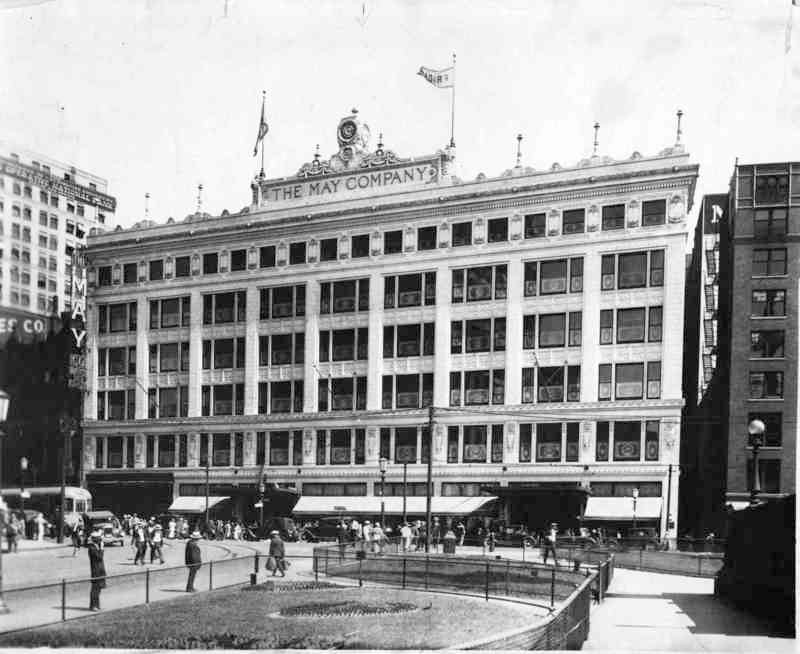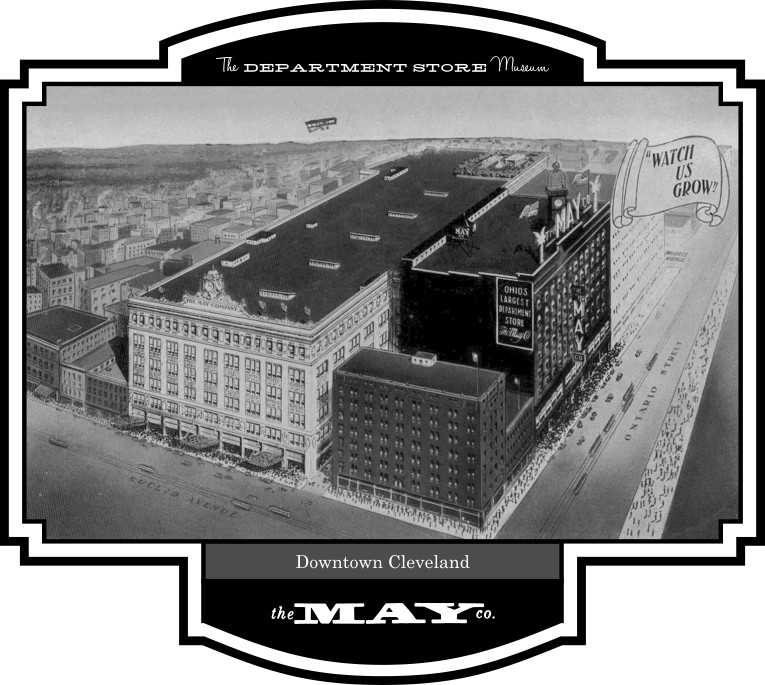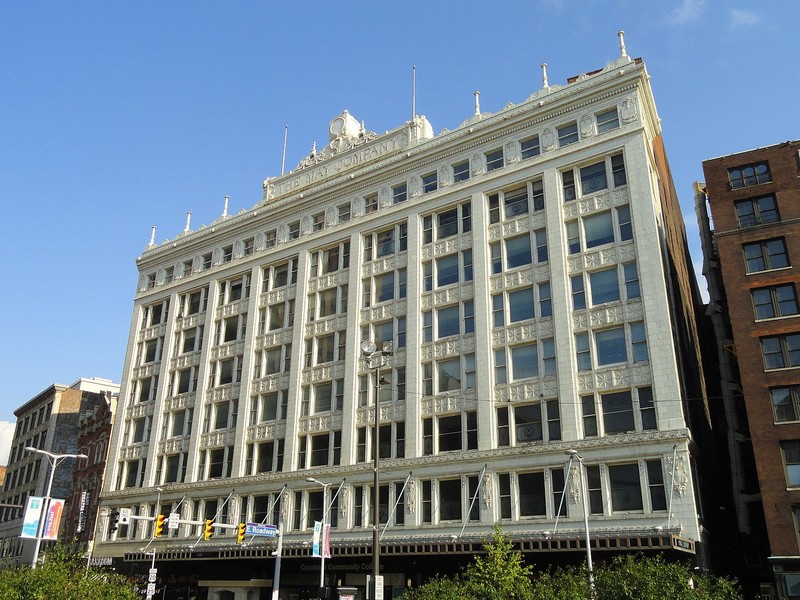May Company Ohio (1915-1993)
Introduction
Text-to-speech Audio
Images
1924 Photo of May Company Cleveland

An aerial view, taken prior to 1931, when the main store building was raised from 6 to 8 stories, shows the large, T-shaped complex with storefronts on Euclid Avenue, Ontario Street, and Prospect Avenue to the rear.

2012 Photo of May Company Ohio

Backstory and Context
Text-to-speech Audio
The acclaimed Chicago-school architect Daniel Burnham designed the 800,000-square-foot May Company department store, which opened in 1915 as the country's third-largest store. The May Company opened its first store in Denver in 1888, and in Cleveland in 1899. After expanding throughout Northern Ohio, the store suffered a dramatic decline during the 1980s and '90s. The historic building is set to reopen as a large apartment complex and retail center sometime in 2020.
The store resembles the architectural interpretations associated with the City Beautiful movement popularized by Burnham. The lauded architect technically launched the architectural trend when he served as the director of works of 1893 World's Columbian Exposition in Chicago. The movement grew more popular when Burnham led a team in Chicago that developing the Plan of Chicago in 1909. The idea behind City Beautiful involved big plans, big projects, and eye-catching designs. The sizable May Building has a white terra cotta facade, clean lines, elegant, symmetrical detailing, and a few stereotypical Chicago-School features such as a durable steel and concrete frame that supported numerous windows.
While the design is historically significant, the building gained fame for its occupant: the May Company. The first store opened in Denver in 1888, and then expanded to Cleveland in 1899. The May Company enjoyed almost immediate success during the first decade of the twentieth century, and even more so after getting listed on the New York Stock Exchange in 1910. Store profits soared from a little more than $700,000 in 1906 to $1.2 million in 1910. May Company sales in 1912 topped at $14.8 million, with net profits exceeding $1.5 million. As a result, board members decided to construct the expansive retail store in 1915 that survives today. Roughly 2,500 employees worked at the grand retail center, which offered patrons luxury shopping areas where they could shop for clothing, housewares, and furniture. Guests could also enjoy amenities like the city's largest soda fountain, fashion shows, hair salons, and a children's playground.
In 1931, The May Company was Ohio's largest department store and the company decided to renovate the downtown store and add two new floors despite the Great Depression. This expansion increased the sales area to more than one million square feet. By the 1950s, May Company followed the population movements away from the city by opening stores in the suburbs, with nine branches in operation by 1979. Still, retail trends and shifting populations led to the decline of the May Company and resultant store closures during the 1980s and 1990s. In 1993, the historic May Company downtown store closed while the remaining stores were re-branded as Kaufmann's, which existed as a May-owned department store rooted in Pittsburgh. In 2006, May Stores merged with Macy's.
The bulk of the historic building remained vacant for several years after the store closed. A plan to convert it into a parking garage resulted in the gutting of its interior, although the garage plan never came to fruition; Cuyahoga Community College School of Hospitality Management and two restaurants occupied a portion of the building for a spell. In 2017, a plan emerged to convert the May Company building into an apartment complex, supporting 308 residential units, retail stores, and 600 parking spaces. The 2019-2020 COVID-19 global pandemic delayed the apartment complex's proposed opening in June 2020.
Sources
Cleveland Historical Team. "May Company." Cleveland Historical. clevelandhistorical.org. Accessed July 26, 2020. https://clevelandhistorical.org/items/show/241.
Hines, Thomas S. "Architecture: The City Beautiful Movement." The Chicago Historical Society Electronic Encyclopedia of Chicago. chicagohistory.org. 2005. http://www.encyclopedia.chicagohistory.org/pages/61.html.
Klein, Richard. Let's Go Shopping at the Square. Cleveland: Cleveland State University MSL Academic Endeavors, October 1, 2014. Available digitally at https://pressbooks.ulib.csuohio.edu/lets-go-shopping/.
https://clevelandhistorical.org/items/show/241#&gid=1&pid=1
http://www.thedepartmentstoremuseum.org/2010/06/may-co-cleveland-ohio.html
By Daderot - Own work, CC0, https://commons.wikimedia.org/w/index.php?curid=23359490
